The distance (S) travelled varies with time (t) for four different bodies as given below. In which case is the acceleration of the body minimum?
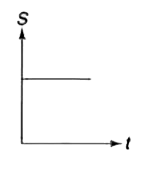
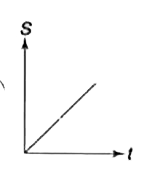
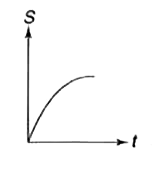

The correct Answer is:D
To determine in which case the acceleration of the body is minimum, we will analyze the displacement-time graphs for the four different bodies. The acceleration can be inferred from the slopes of the displacement-time graphs and the subsequent velocity-time graphs.
1. Understanding the Graphs:
- Each body's motion is represented by a displacement-time graph. The slope of this graph gives the velocity of the body.
2. Analyzing Each Option:
- Option 1: The graph shows a constant displacement over time. This means that the slope is zero, indicating that the velocity is zero. Since acceleration is the rate of change of velocity, if the velocity is constant (zero in this case), the acceleration is also zero.
- Option 2: The graph is a straight line with a constant positive slope. This indicates a constant velocity. Therefore, the acceleration is zero as there is no change in velocity.
- Option 3: The graph shows a curve where the slope decreases over time. This means that the velocity is decreasing. Since the velocity is decreasing, the acceleration is negative (constant negative acceleration).
- Option 4: The graph shows an increasing slope, indicating that the velocity is increasing. Thus, the acceleration is positive.
3. Comparing Accelerations:
- From Options 1 and 2, we see that the acceleration is zero in both cases.
- In Option 3, the acceleration is negative (which is less than zero).
- In Option 4, the acceleration is positive.
4. Conclusion:
- Since we are looking for the minimum acceleration, we compare the values:
- Zero (from Options 1 and 2) is greater than negative acceleration (from Option 3).
- Therefore, the minimum acceleration occurs in Option 3, where the acceleration is negative.
Final Answer:
The acceleration of the body is minimum in Option 3.
---
- Each body's motion is represented by a displacement-time graph. The slope of this graph gives the velocity of the body.
- Option 1: The graph shows a constant displacement over time. This means that the slope is zero, indicating that the velocity is zero. Since acceleration is the rate of change of velocity, if the velocity is constant (zero in this case), the acceleration is also zero.
- Option 2: The graph is a straight line with a constant positive slope. This indicates a constant velocity. Therefore, the acceleration is zero as there is no change in velocity.
- Option 3: The graph shows a curve where the slope decreases over time. This means that the velocity is decreasing. Since the velocity is decreasing, the acceleration is negative (constant negative acceleration).
- Option 4: The graph shows an increasing slope, indicating that the velocity is increasing. Thus, the acceleration is positive.
- From Options 1 and 2, we see that the acceleration is zero in both cases.
- In Option 3, the acceleration is negative (which is less than zero).
- In Option 4, the acceleration is positive.
- Since we are looking for the minimum acceleration, we compare the values:
- Zero (from Options 1 and 2) is greater than negative acceleration (from Option 3).
- Therefore, the minimum acceleration occurs in Option 3, where the acceleration is negative.
The acceleration of the body is minimum in Option 3.
Topper's Solved these Questions
- BOOK - MCGROW HILL PUBLICATIONCHAPTER - MISCELLANEOUS QUESTIONSEXERCISE - PART-B99videos
MISCELLANEOUS QUESTIONS
- BOOK - MCGROW HILL PUBLICATIONCHAPTER - MEASUREMENTEXERCISE - ELEMENTARY QUESTIONS (HIGHER ORDER THINKING QUESTIONS)13videos
MEASUREMENT
- BOOK - MCGROW HILL PUBLICATIONCHAPTER - MOTIONEXERCISE - HIGHER ORDER THINKING QUESTIONS48videos
MOTION
Similar Questions
Knowledge Check
- Question 1 - Select One
The distance (5) travelled varies with time (t) for four different-bodies as given below. In which case is the acceleration of the body is minimum?
A B
B C
C D
D
- Question 2 - Select One
Variation of distance with time for four different · particles are displayed at (a), (b), (c) and (d). In which graph the acceleration of body is minimum?
A B
B C
C D
D
- Question 3 - Select One
The distance travelled by the moving body is :
AThe area between the speed time graph and time axis.BThe area between the speed time graph and speed axisCThe area between the distance time graph and time axisDThe area between the distance time graph and distance axis
When a body is moving uniformly along a straight line and there is no force of friction, acceleration/retardation of the body. According to Newton's second law of motion, the magnitude of force acting on a body is the product of mass and acceleration of the body
The distance - time table of an object in motion is given below

In the given table, acceleration of the object isView SolutionThe velocity-time graph of a body moving in a straight line is given below. The displacement of the body in 10 s is
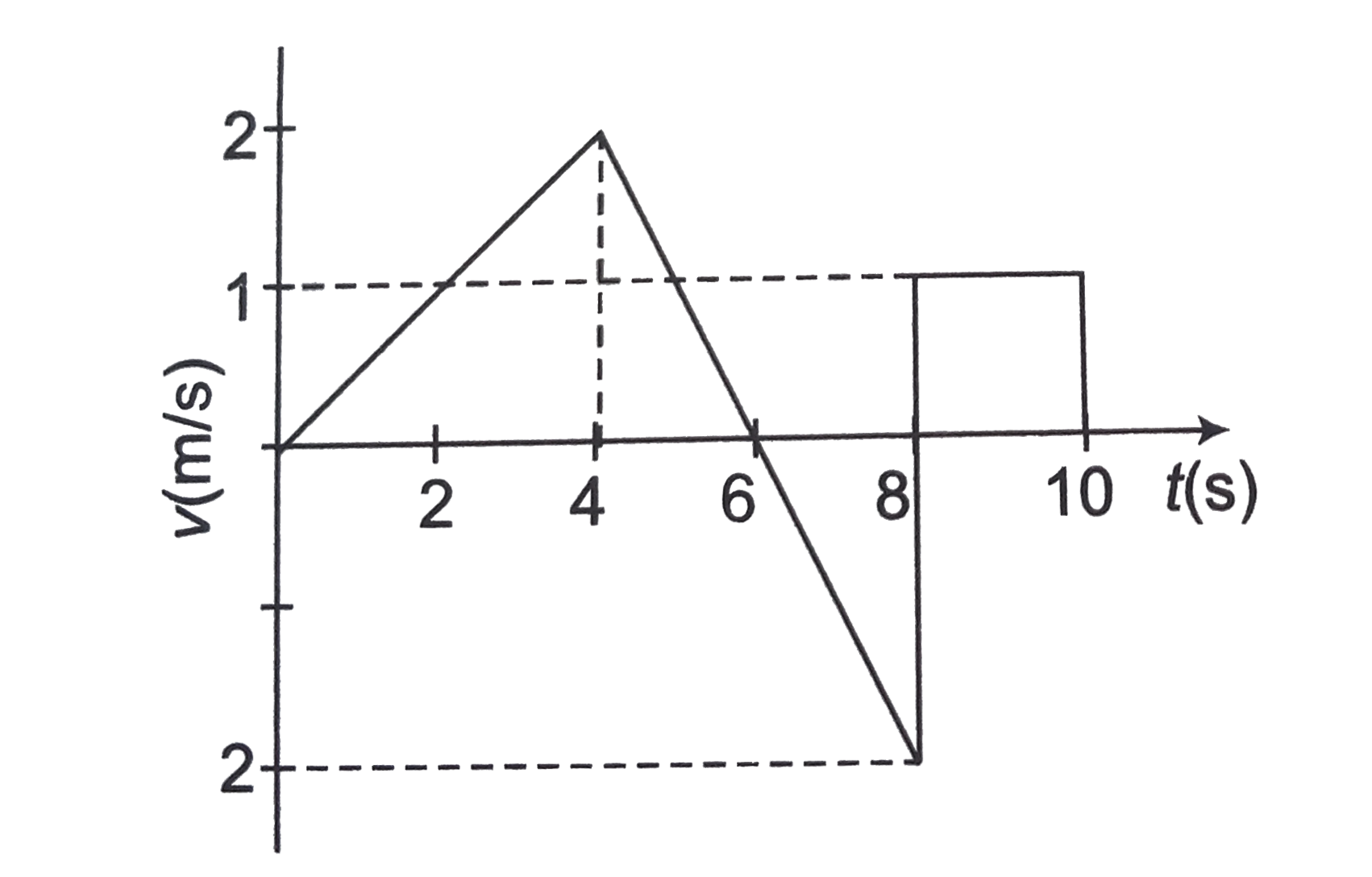 View Solution
View SolutionThe velocity v of a body moving along a straight line varies with time t as v=2t2e−t, where v is in m/s and t is in second. The acceleration of body is zero at t =
View SolutionThe velocity - time graph of a body is given in figure below .
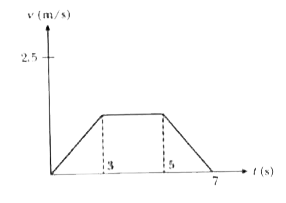
The acceleration-time graph of the motion of the body isView SolutionThe displacement of a body is given to be proportional to the cube of time elapsed. The magnitude of the acceleration of the body is
View Solution


